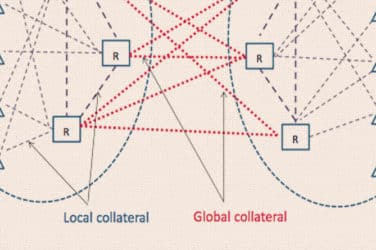
The use of auto-collateralization, which leads to major liquidity savings for participants, tripled last year on TARGET2-Securities, the platform which aims to harmonize cross-border securities settlements in the Eurozone.
T2S allows settlement in central bank money across borders, central securities depositories and currencies so there is no difference between domestic and cross-border transactions. The settlement platform began operating in 2015 after being launched by the European Central Bank in 2008 to end fragmentation in securities settlement across the Eurozone as the cost of cross-border transactions could be 10 times more expensive than domestic transactions.
In T2S participants can use one cash and securities account for all T2S markets, which now have the same cut off times, allowing liquidity and collateral to be pooled. Auto-collateralization is triggered when a buyer does not have sufficient funds to settle securities transactions and liquidity is automatically supplied by either a central bank or a payment bank.
The European Central Bank said in the 2016 T2S Annual Report that the use of intraday credit through auto-collateralization on T2S tripled from €16.9bn ($18.1bn) to €47.8bn. There was also a change in how auto-collateralization was used – in the first six months of last year half of auto-collateralization was triggered during overnight settlement, but this reduced to 25% in the second half when 75% was triggered during real-time settlement.
The increase was due to the completion of the second and third wave of central securities depositaries migrations with a peak on 1 December as intraday credit reached €71bn.
The third migration wave of five CSDs was completed in September last year when T2S reached about 45% of the total transaction volume expected after the end of full migration. T2S processed the highest daily average value of €578bn in December but total annual volumes settled last year remained 25.8% below the initially projected level.
In February this year another six migrating CSDs joined T2S, including Germany’s Clearstream, allowing T2S to reach about 90% of the total volume of securities transactions expected by the end of migration
The ECB said: “As of the end of February 2017, about 500,000 securities transactions are settled every day. Significant steps forward have also been made in the course of the past year towards the harmonization of post-trade activities across all T2S markets.”
After the migration of Clearstream, LCH, the London Stock Exchange Group’s clearing house, said in a statement in March it had extended its RepoClear service to offer clearing for cash and repo trades on German government securities via LCH SA, its continental Europe-based entity, which already clears trades on Italian, French and Spanish government securities.
The new offering covers trades on German government and regional debt allowing members clearing these products to net their positions with other European transactions cleared at LCH SA and settled through T2S, reducing the use of balance sheet and capital and margin requirements.
Michael Manna, head of EMEA and APAC fixed income financing at Barclays, said in a statement: “There is clear evidence that the roll out of T2S will bring tangible benefits towards improving the infrastructure services required to support liquidity in the European sovereign bond markets.
The final migration wave is on 18 September 2017, when the number of CSDs connected to T2S will reach 22, representing a total of 20 European markets.
The European central bank continued that T2S has been a catalyst in driving harmonization, which also supports the European Commission’s efforts to build a capital markets union. Last year T2S markets’ level of compliance with harmonization standards increased from 63% to 70%.
“Further currencies and markets may also join in future rollout phases and economies of scale will help T2S unleash its full potential,” added the ECB. “The more markets join the common securities settlement platform, the greater the benefits for its users.”
The Danish kroner is set to join T2S by the end of 2018, turning it into a multi-currency securities settlement platform. The Eurosystem is also investigating the possible consolidation of T2S and TARGET2 for payments.





